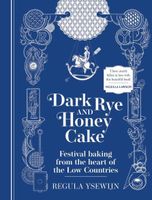Advertisement
Krakeling, Bretzel, Pretzel
Published 2023

JAN HAVICKSZ. STEEN (c.1626–1679): Baker Arent Oostwaard and his Wife Catharina Keizerswaard, 1658, Rijksmuseum Amsterdam. In the painting we see krakelingen (pretzels) hanging from a pretzel stand, as well as duivekater, beschuiten and several white buns. In the background a little boy is blowing the bakery horn to alert the villagers that the bread is ready.
The shape of the krakeling or pretzel, this twisted strand of dough, symbolises the eternal cycle of life and death. It can also be seen as a symbol of marriage or the crossed arms of someone in prayer. With concepts as old as a pretzel, different meanings could all have been relevant at one point in history or in some locality. The legends surrounding its origins, too, are plentiful.

